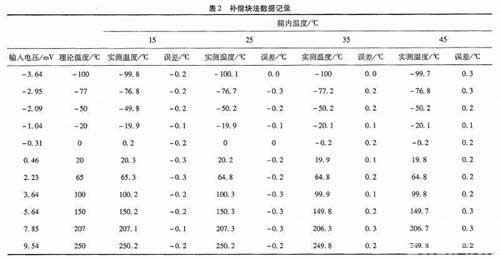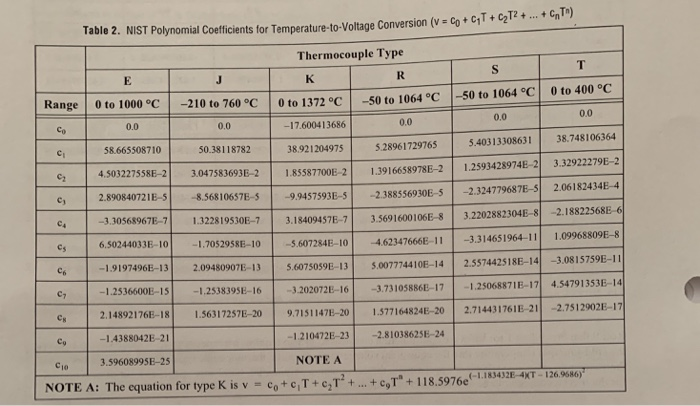
- #Millivolt to temperature conversion chart how to
- #Millivolt to temperature conversion chart code
- #Millivolt to temperature conversion chart download
#Millivolt to temperature conversion chart download
At the top and bottom of each table, there are two drop-down menus, each for the thermoelectric voltages and coefficients, and a link to the Download Tables of Thermoelectric Voltages and Coefficients.

Īll the thermocouples tables have the same format. Electromotive force is abbreviated as emf, or symbolically denoted as E. The default units used in this version of the database for temperature and electromotive force are degrees Celsius (☌) and millivolts (mV), respectively. From this page one can also choose to View Thermocouple Types Definitions or proceed to the download page to Download Tables of Thermoelectric Voltages and Coefficients. Please note that one can select only ONE table at a time of thermoelectric voltages of each type by temperature range, of the coefficients, or of the inverse coefficients. In the View Tables page, select from a drop down menu to view a table of thermoelectric voltages (by type and temperature range), of the coefficients, or of the inverse coefficients. This page also contains links to appendices, tables, and references. The Introduction page describes the technical basis of the database.
#Millivolt to temperature conversion chart how to
It will be near but not the same.ITS-90 Thermocouple Database, How to Use the Database Declare the script language used and the source where the script functions are located. So if you are using internet and you are matching your temperature reading from the one that is given for your city on a weather forecast site than your reading will not be same like theirs. It can only measure the temperature of the surroundings with in the circle of between 100 to 500 feet. Note: LM35 is an absolute temperature sensor.

It gives a voltage signal that is actually the temperature of the particular place. To Pin#1 of Lm35 apply 5v, make Pin#2 ground, and the third one the middle pin is output pin. The circuit diagram of the project is given below. Arduino analog pin is used to read the analog output signals from the sensor. Lm35 can measure from -50 degree centigrade/Celsius up to 150 degree centigrade/Celsius. 10 mills volt represent one degree centigrade/Celsius. So if Lm35 outputs 100 mills volts the equivalent temperature in centigrade/Celsius will be 100/10 = 10 centigrade/Celsius. Lm35 Celsius/centigrade resolution is 10 mills volt. Lm35 output voltage is proportional to centigrade/Celsius temperature.

#Millivolt to temperature conversion chart code
It will help you in understanding the code below. I suggest you to take that tutorial if you are new and don’t know much about the lm35 temperature sensor. I also derived temperature measuring formula for lm35 temperature sensor. I prepared a nice tutorial on Lm35 pin out its internal structure and working. Some other old analog temperature sensors like TMP36 is also available in market but they are not popular among students, hobbyist and diy electronics project makers. Lm35 is the oldest analog output temperature sensor still serving and available in the market. For this tutorial we need an arduino board(Uno, Maga, Lenardo etc) and Lm35 temperature sensor. I am going to measure the temperature using low cost and efficient lm35 analog output temperature sensor with arduino. Measuring Temperature of a place through Arduino is very easy by using any of the commercial temperature sensor available in the market.


 0 kommentar(er)
0 kommentar(er)
